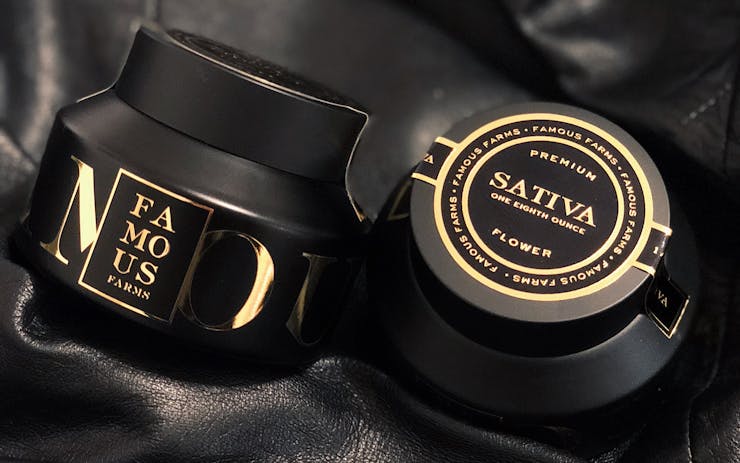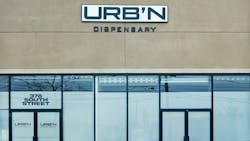Besides employing countless growers and budtenders, the cannabis industry is creating scores of jobs in other sectors. Case in point: Courtney Zalewski, a 31-year-old designer based in Los Angeles. After starting her career as creative director of the SuicideGirls brand, Zalewski’s branched out into the cannabis industry, working with Lowell Herb Company, 1906 chocolate edibles, and the SuicideGirls vape line. As California readies its recreational cannabis market (scheduled to go live at the start of 2018), Leafly spoke with the Detroit-born Zalewski about how she came to do what she does.
“There’s an appetite for good design but there are a lot of limitations when it comes to packaging and regulations.”
LEAFLY: How did you get started in this market?
COURTNEY ZALEWSKI: I started with Lowell Herb Company. I’d been working closely with Sean Black, the creator and co-partner, for 12 or 13 years. I’ve been helping him evolve this vision and concept in packaging and websites and even points of sale. That was my first experience in the cannabis industry. From there, it’s been a lot of hustling.
What are some challenges when designing for the cannabis sector?
There’s an appetite for good design but there are a lot of limitations when it comes to packaging and regulations. Constraints are great for design, but it’s to the point where we don’t know where things are going. For example, I’m working on creating a line of pre-rolls—do we go all in and spend a bunch of money on beautiful packaging? Or do we wait for the recreational regulations for California to go through to find out if it’ll need to be child-resistant or if it’ll need a certain type of container?

(Courtesy of Courtney Zalewski)
What are some of the restrictions you’re required to navigate?
The strictest regulations come with edibles. They have to be in an opaque package, because there’s fear that children will look at a cookie and grab it. Not so much with a flower. We’re still tiptoeing around how we develop things.
Are there any images you avoid in your design?
Not really. I try to stay away from the pot leaf. It’s in a couple of the things that I do, but for the most part I try to keep it as classy as possible. A lot of designers and brands talk about de-stigmatizing the legacy stoner aesthetic. I feel like we’re already away from that, there’s so much good design out there that I don’t think we should be concerned about that legacy stoner vibe anymore. The bar’s set pretty high, we just have to keep it evolving.

(Courtesy of Courtney Zalewski)
How do you approach each project?
It starts off with research. I figure out what the brand is trying to do, who and what they want to be. Then I start researching outside of that, in different categories. Definitely outside of cannabis culture, that’s not where I want to get my inspiration. I look at things like beauty companies, health companies, even food and wine packaging. Different things like that that have history and have proven to be leaders in the design worlds. Once I’ve researched, then I explore different options through logo design and colors, and then I build up this package until it becomes something really beautiful.
Do you face stigma when you tell people what market you work for?
Not really in California—people’s eyes light up when you tell them. But when I was in New York, a little bit, but it’s mostly curiosity.
Do you think you’ll keep focused on this market?
I’m 100% dedicated to doing this. It’s what I want to focus on and hopefully do for a long time. There’s huge opportunity to develop long-standing, iconic brands. To have that opportunity is something I want to jump on.





